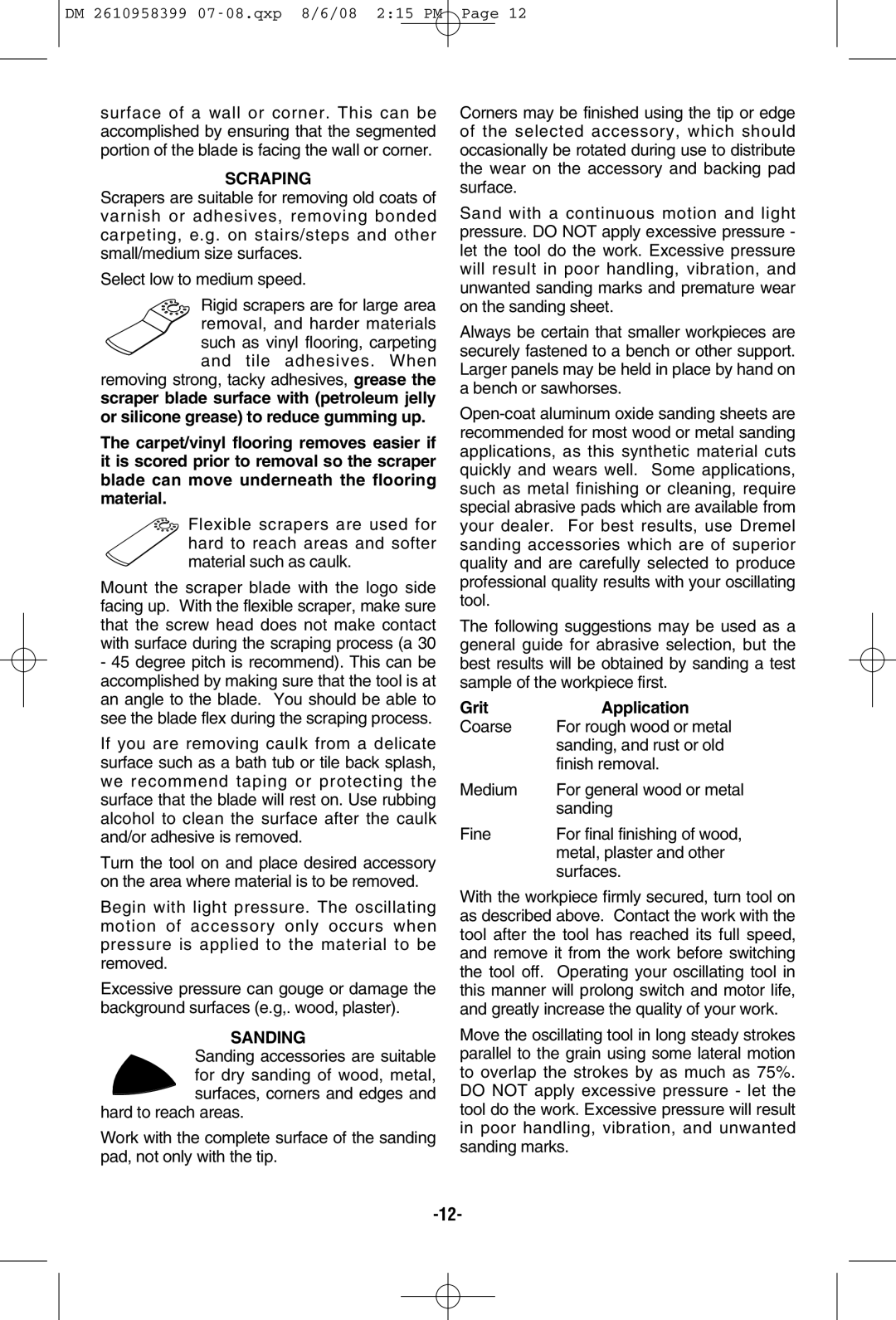6300 specifications
The Dremel 6300 is a versatile rotary tool specifically designed for a wide range of DIY projects and crafts. Known for its compact size and lightweight design, the Dremel 6300 offers exceptional control and precision, making it an ideal choice for both beginners and experienced hobbyists. This innovative tool is part of the Dremel family, a brand synonymous with quality and durability in the realm of rotary tools.One of the standout features of the Dremel 6300 is its variable speed control. This tool allows users to adjust the rotational speed between 5,000 to 35,000 RPM, facilitating different material handling and project requirements. Whether you are cutting through wood, grinding metal, or polishing delicate surfaces like glass, the ability to fine-tune the speed significantly enhances the tool's versatility.
Equipped with a powerful motor, the Dremel 6300 delivers consistent performance even under heavy use. This motor is engineered with advanced cooling technology that minimizes overheating and ensures longevity. The tool also boasts a flexible shaft attachment, allowing users to work in tight spaces and achieve greater maneuverability on intricate projects.
Dremel's Quick Change Chuck feature is another notable characteristic of the 6300 model. It enables users to change out accessories quickly and conveniently, which is essential for projects requiring multiple attachments. The tool is compatible with a vast array of Dremel attachments and accessories, from cutting and grinding bits to polishing pads and sanding drums, making it a truly versatile tool for any craftsperson.
Moreover, the ergonomic design of the Dremel 6300 provides a comfortable grip during extended use. This emphasis on user comfort ensures that the tool can be used for prolonged periods without causing fatigue. Additionally, the balanced weight distribution enhances stability, giving users more confidence when performing intricate tasks.
In summary, the Dremel 6300 is an excellent rotary tool that combines power, precision, and versatility. With its variable speed control, robust motor, flexible shaft, and user-friendly features, the Dremel 6300 is an essential addition to the toolkit of anyone who enjoys crafting or DIY projects. Whether you are a seasoned professional or just starting, the Dremel 6300 will help unlock your creative potential.

